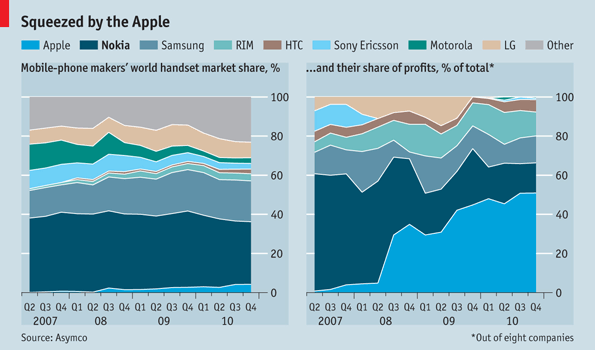Surprisingly there are still skeptics to the power of a brand to add significant value to a business. This usually comes from the operations and finance folks. Accounting practices don’t have a tidy place for things that exist more between the ears of consumers than within a company’s warehouses and bank accounts.
When I’m teaching the concept of brand building (versus business building), I define the former efforts as bolstering its “intellectual property value.” This is done partially by the folks in marketing and communications, but far more commonly it’s done by such things as innovations in product design, improved distribution and creative pricing.
Apple has certainly done two out of three. Their pricing is hardly “creative.” As a market leader, Apple’s prices are mostly set to convert this elevated brand value into lovely lucre. Lots of it.
Strong Brands Can Deliver Amazing Profits
Below is a case in point, taken from an Economist Magazine published earlier this month (a pay wall may block you from full content):
The story is about diminishing returns for most cell phone handset makers. Diminishing, that is, except for Apple. Comparing Apple’s handset share of market with the brand’s share of profits is a clear demonstration of how powerful a strong brand can be to maximize profits — even with relatively modest market share.
